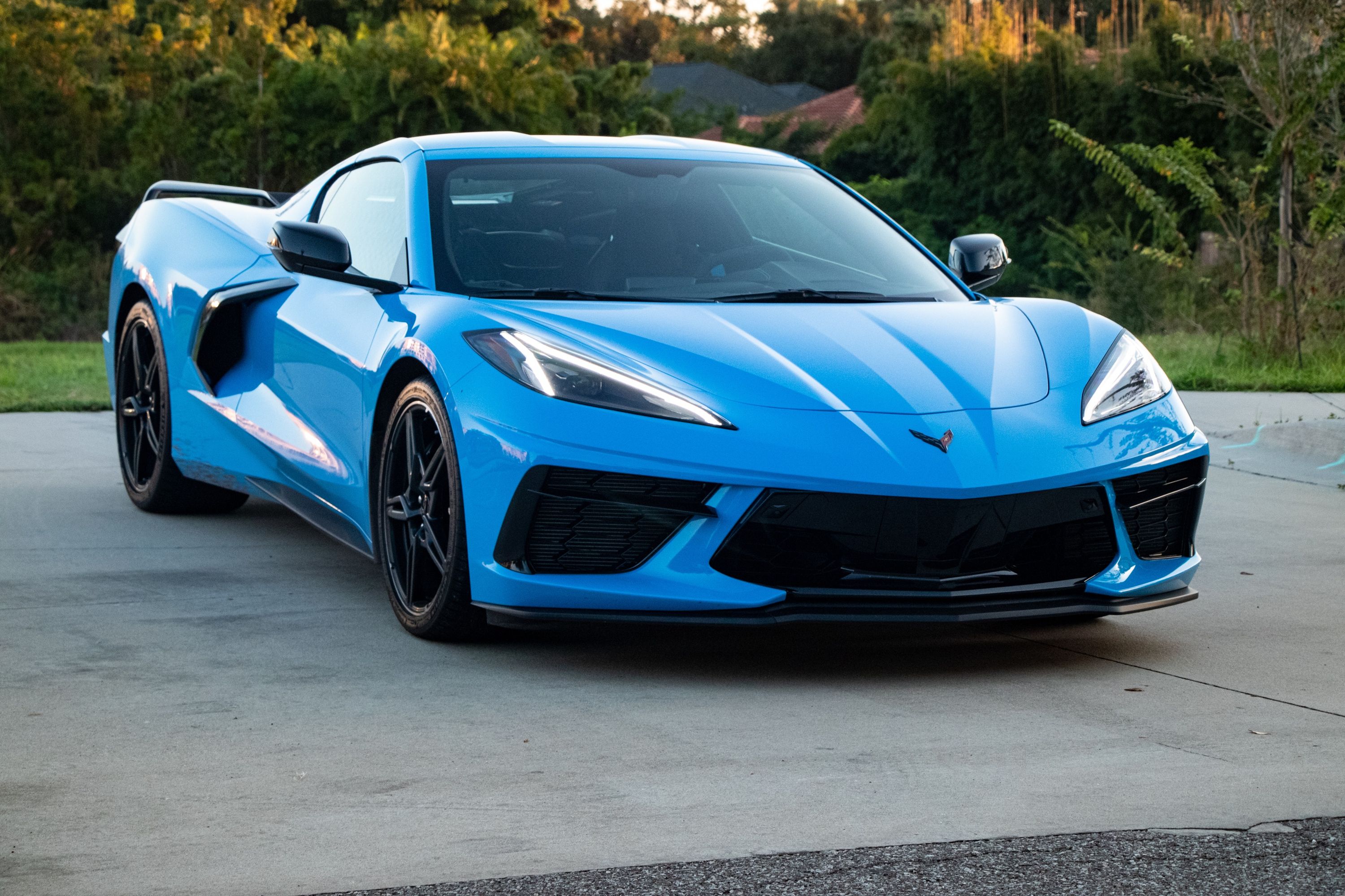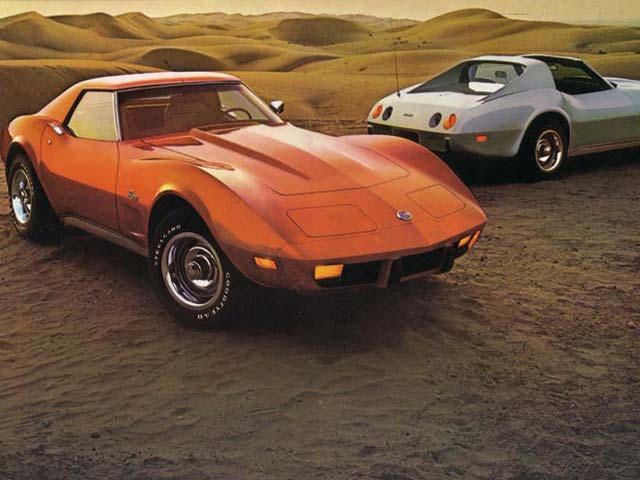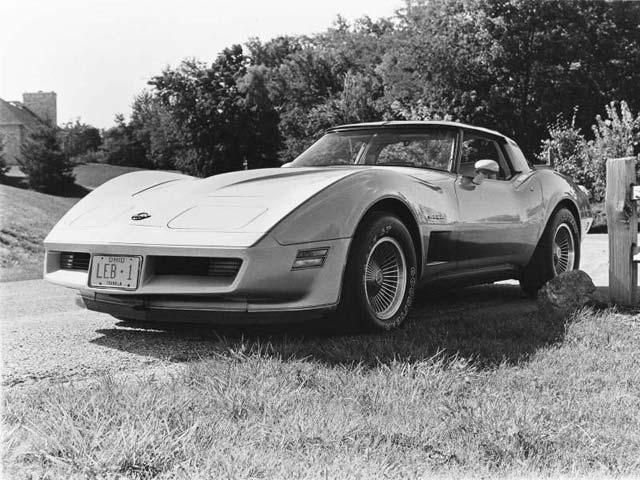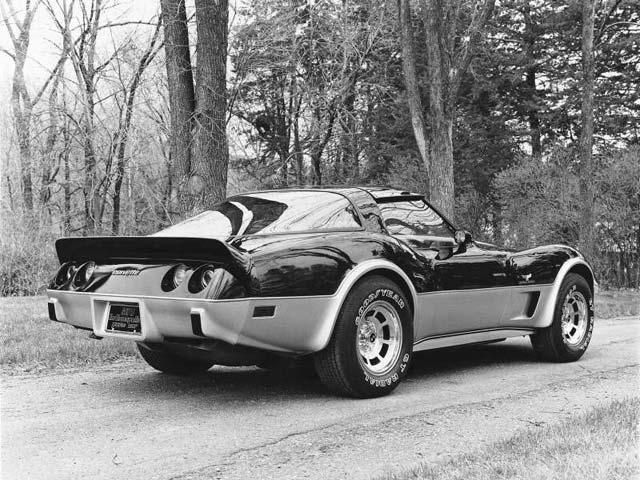
During the transition from the Corvette C1 to the C2, the battle for the car's spirit was decided in favor of a true sports car, unlike that of the Ford Thunderbird. The designers approached the look of the third generation, the C3, with the task to establish and disseminate its reputation as a pure sports car. After getting rid of the peculiarities and idiosyncrasies of the original Stingray, designers gave the Corvette its familiar shape, which has remained as the leitmotif of its designers ever since.
The C3 retained all of the C2's underpinnings, i.e. chassis and V8 engines, though the engines varied during its lifespan. Its look was more attractive and its proportions better suited for a sportscar: A very long forward sloping hood with wavy sections at its side, above the front wheels. There was also a very noticeable shoulder line behind the doors over the rear wheels; rotating headlamps were replaced by pop up units (actuated by a hydraulic arrangement rather than electric motors). The side vents behind the front wheels were also redesigned and the front air intakes were divided into two sections, hidden under the chromed front bumper.
A shorter back end with a new design theme and look was also incorporated. The coupe's rear window was shoved forward right behind the headrests and was stretched to the entire car's width. The hard top convertible was given a removable back canopy and the soft top could be folded into a storage compartment behind the two seats. The fuel tank was planted under the fiberglass body panel at the rear of the car (where a normal car's trunk is located) and the tank opening was positioned at the center of that rear deck body panel. Overall the C3 was a rough design that was the base for refinement in coming incarnations.
In 1965 Chevrolet engineers and designers were already hard at work on the new car. The concept Mako Shark II revealed the first clues for the new generation with more curves in its bodywork and a different look for the passenger compartment. During its entire 15 year production run, the Corvette C3 was equipped only with V8 engines; either small-blocks starting at 165hp or big-blocks up to 430hp (the latest was the ZL1 with only two units built). However, the powerful engines were available only up to 1974, following the introduction of unleaded fuel and the switch in output measurement from gross horsepower to net horsepower.
In 1982, the C3's last year, a new fuel injection system was installed in its small-block 350 CID engine. It was called "Cross-Fire Injection" that utilized two throttle bodies combined with Chevrolet's computer control system to produce a scant 200hp output. It was mated to a new four-speed automatic transmission with a torque converter. Another memorable development during the C3's lifespan was its huge price increase. The 1968 model's price was $4,660, about $1,100 above the price of the C1 when it was launched. That price tag more than doubled in a decade as the price went up to $9,750. In the next four year it rocketed to a staggering $18,290.
So the same model, albeit now with a modern fuel injection system, a catalytic converter, a 5 mph front and rear bumper system, sport seats and a less powerful engine quadrupled its price in 14 years. Sales were hampered by the next price increase in 1982, the model's final year. Only 25,407 units were sold, down from almost 54,000 in 1979. That year the Corvette was offered in a special Collector's Edition that featured a hatchback rear window that was later incorporated into its successor, the C4. It was the first Corvette to receive $20,000 + price tag ($22,530) and 6,759 units were sold.



